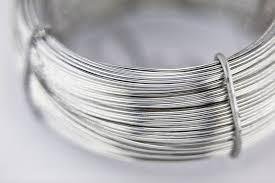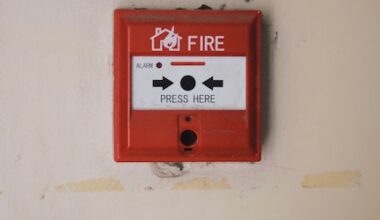Your electrical system damage may be covered by homeowner’s insurance, but it also has the potential to cost more or exclude coverage for homes with aluminum or knob-and-tube wiring.
There is no denying that the electrical wiring in your home affects its functioning and safety. Electrical mishaps are one of the main causes of house fires each year, and the damage may be expensive.
The age and maintenance of your home can affect how it is wired. Aluminum or knob-and-tube wiring, which carries a higher risk of fire or other problems, is frequently seen in older homes.
If your home has this older style of electrical wiring, some insurers may view it as a higher risk or even refuse to provide coverage.
There are a few considerations to make if your home is older and has this type of wiring, and in the end, it might be beneficial for you to change the wiring to lower your home insurance. Does home insurance cover aluminum wiring? Find out more in this article.
Aluminum Wiring: Background
Due to the prohibitively expensive nature of copper in that era, residential construction in the 1960s and 1970s frequently made use of aluminum wire instead.
Due to the terminations and connectors that were used when this form of wire was established were not rated for aluminum wiring, it was phased out in Canada because of safety concerns with both the wiring and the terminations and connectors that were used when this type of wiring was introduced. The use of aluminum wire in the wiring of branch circuits is no longer permitted.
There is cause for concern regarding aluminum wiring due to its propensity to oxidize, which results in an increase in resistance and may lead to overheating and fire.
Overheating and fire are both possible outcomes of faulty connections using fittings and connectors that are not compatible with one another. However, if it is well maintained and regularly inspected, aluminum wire can be completely risk-free.
Copper wires have a more brownish or orange-ish color, whereas aluminum wires have a whiter color (see the picture below). Aluminum wiring can be identified by its whiter color.
See Also: Mortgage vs Home Owners Insurance: What’s the difference.
What safety concerns are there with aluminum wiring?
It was discovered that aluminum construction wire had a higher conductivity than its primary rival, copper wiring and that it could be purchased at a more affordable price. Because of this, there was a significant increase in the number of opportunities for the builder and the buyer of the property to reduce expenses.
It was necessary to utilize different gauges of wire when installing aluminum as opposed to copper, but the installation procedures were otherwise the same. Because of this, builders were able to quickly adapt to the newly available building materials. The problems with aluminum wiring were immediately noticeable upon the widespread adoption of the newly developed construction wire.
After more investigation and testing of the wires, they concluded that aluminum wires were not as good as copper wires once they were removed from the scientific labs.
What are the notable safety concerns with using aluminum wiring?
Rusting:
A layer of copper oxide will build on the surface of the wire if it is made of copper and allowed to rust. The electrical conductivity of the copper oxide can also be demonstrated.
The aluminum oxide that forms during the oxidation process of aluminum wire is not a very good conductor, and as a result, it disrupts the normal flow of electric current.
Overheating will occur whenever there is a disruption in the passage of electrical current. Getting too hot near combustible items might start flames.
Creeping:
When current is passed via a wire, the wire’s temperature rises, which causes the metal to expand. After being heated, the aluminum wire will expand at a greater rate than the copper wire will.
The aluminum wires will gradually become disconnected from their connectors as a result of the ongoing heating and expansion of the metal.
Overheating of electrical lines and the potential for fires can be caused by loose fittings on the wires.
Softness:
When compared to copper wire, aluminum wire is noticeably more malleable. Also, when compared to its copper counterpart, the aluminum wire is significantly simpler to nick, squeeze, and cut.
When an electrical wire is cut, nicked, or pinched, the damage to the wire might result in localized hot spots, which can then cause the wire to overheat.
What are the insurance concerns with aluminum wiring?
Because aluminum wiring can quickly become overheated and start a fire as a result, insurance companies will consider aluminum wiring in a home to present a higher risk than copper wiring does in the same property.
When one considers that an aluminum wire is more likely to overheat and possibly start a fire, one finds it difficult to blame the company in question.
When they insure any home, insurance firms are taking a calculated risk. If the typical annual cost of homeowner’s insurance was, for example, $1,200, and the typical cost to rebuild a home is, on average, $400,000, you can see why they are taking on such a significant risk by doing this.
If your home were fully destroyed in a fire, it would take the insurance company longer than your lifetime to make up the loss through premium payments. Try it out for yourself: take $400,000 and divide it by 1,200 to find out how many years it would take the insurance company to make that money back.
See Also: What is Delayed Financing; Pros, Cons, Exceptions. How Does it Give Homebuyers Cash Power?
What electrical problems does home insurance cover?
Dwelling coverage in homeowner’s insurance protects the insured’s home from a variety of hazards. This means that if a covered event, such as a windstorm, causes damage to your electrical panel, your insurance may pay the cost of repairing it, provided that it complies with the applicable regulations.
This indicates that if your property has aluminum wiring, which is sometimes regarded as being out of date, you may want to give priority to paying for this particular sort of coverage.
Just keep in mind that the limit that is covered by ordinance or law coverage is normally 10 percent of the amount that is covered by your dwelling coverage. Therefore, if your coverage is for $250,000, your insurance company will pay $25,000 toward the cost of any necessary upgrades.
What electrical issues are not covered by home insurance?
If your home suffers electrical damage and the cause of the damage is not a risk that is covered by your homeowner’s insurance, it is doubtful that your policy will pay the cost of the damage.
If the wiring in your home is damaged and out of date, then the expenditures that are necessary to repair it and bring it up to code may be partially covered by insurance policies that have ordinance or law coverage.
In most cases, insurance will not pay for repairs to electrical damage caused by things like normal wear and tear, electrical fires, or broken electrical panels caused by a lack of upkeep.
Home insurance with knob-and-tube wiring
Another type of electrical wiring that is now deemed antiquated is known as knob-and-tube wiring. Since it is so delicate, knob-and-tube wire, like aluminum wiring, is susceptible to deterioration over time.
Because of this, in addition to the safety problems associated with this type of wiring, homes with aluminum wiring sometimes have their insurance claims rejected or face higher premiums than comparable homes with copper wiring.
Knob-and-tube wiring safety concerns
This method of wiring is susceptible to possible dangers such as the risk of fire, the absence of a grounding conductor, and the cracking of the porcelain tubes that cover the wires in the system.
There’s also the possibility that this older wiring is incapable of meeting the stringent electrical requirements of today’s electronics. Even though knob-and-tube wiring only needs a 60-amp service to function, most insurance companies insist that your home have 100-amp service.
Other issues that can arise with knob-and-tube wiring include the following:
- Insulation that is brittle and flakes off.
- tangled wires
- Wiring that is located in the walls or ceilings is difficult to access.
- DIY tweaks
- Insufficient presence of grounding conductor
Things to keep in mind for homes that have older electrical wiring
Homes that are more than a few decades old probably feature wire made of aluminum or knob-and-tube. After the house inspection is over, the insurance company may request that the homeowners fix or upgrade any wiring that has been damaged or that shows signs of wear and tear. Should you fail to do so, they may terminate your coverage.
See Also: INSURANCE RISK SERVICES| Review 2022
How to insure homes with old electrical wiring
If you insure an older home that has aluminum or K&T wiring, your insurance provider will probably do an interior assessment of the property not long after your policy goes into effect.
Your homeowner’s insurance company may require you to make repairs or upgrades to your home’s wiring if it exhibits any visible signs of wear and tear that could endanger the safety of your home. If you do not comply with this request, you run the risk of having your policy canceled.
If you are unable to afford to make electrical changes to your property and you require insurance right away to complete the requirements of your mortgage, you may want to explore obtaining coverage through an excess or surplus lines insurer.
The majority of normal insurance providers will not cover certain risks, such as homes with damaged roofs or aging electrical wiring, but surplus insurance companies make it their business to insure these types of properties.
Surplus lines coverage is an acceptable fallback alternative; however, it is often very expensive and does not provide the same level of protection as conventional homeowner’s insurance does.
The Solutions:
Aluminum wire is still covered by some insurance carriers. Your home could be considered safe, though, provided you have a licensed electrician come and fix the wires at their connection locations.
To save money for homeowners, the building industry decided not to remove every single wire from a house. In the future, electricians will be able to replace receptacles and switches, as well as the connections to these receptacles and the electrical panel.
After the existing aluminum wire connections have been updated by a licensed electrician, they should be able to issue a certificate of completion. Insuring a home with aluminum wiring is essential.
An electrician’s certification is required by insurance companies that cover homes with aluminum wire to confirm that the home complies with modern electrical codes and safety regulations.
It’s not difficult to insure a property with aluminum wiring, but the homeowners will have to take a few extra procedures. Property owners must still show their electrical certification as proof of their house’s safety after receiving it from a licensed electrician.
This certificate will be used by your insurance broker or agent to try to get insurance for you and your home.
Does Aluminium Wiring Have To Be Replaced?
If you still have aluminum wiring in your home, it should be updated and replaced. It is prone to losing shape and structure owing to repeated temperature fluctuations and was installed in homes built between 1965 and 1973. If the wire becomes structurally unstable, it could cause a fire.
Can You Get Insurance With Aluminium Wiring In Florida?
Yes, although you’ll almost certainly have to fix the cables in some way or pay a higher cost than usual. Insurers often dislike it when anything on a house is too old.
FAQs on Does HOME INSURANCE Cover ALUMINUM WIRING?
You should be able to find an insurance carrier that will cover aluminum wiring in your home. However, you might expect to pay much more than you would for a property with modernized wiring.
No, age-related damage is not covered by homeowner’s insurance. It is very unlikely that you would be reimbursed for the repair costs if your property has an electrical fire or if your electrical lines break.
According to HomeAdvisor, replacing a home’s electrical wiring can cost anywhere from $555 to $2,291, with the average being $1,406.
Because aluminum wiring is more difficult to cover, your insurance company may deny your claim or charge you more for coverage if you have an older home with aluminum wiring. Updating your home’s electrical wiring for a more reliable and cost-effective lighting system may even be in your best interest.
The best way to keep your house safe and secure is by making sure it has the appropriate home insurance coverage.
Homeowners with aluminum wiring may be able to obtain insurance, but their premiums will almost certainly be higher than those of their neighbors who have modern electrical wiring.
Copper wiring is safer and less likely to cause a fire than aluminum wiring, hence it should be installed in all residences. There are financial benefits to this as well.






